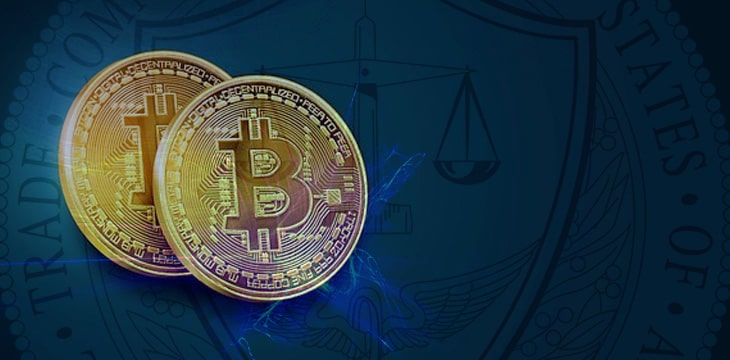|
Getting your Trinity Audio player ready...
|
Hester M. Peirce’s “safe harbor” proposal for token distributions continues to stir debate in the digital space. In this piece, we look at the conditions such projects may have to meet at the end of the three-year grace period, and note that only Bitcoin and tokens issued on the BSV blockchain could fulfil them.
Peirce, commissioner of the U.S. Securities and Exchange Commission, first announced her proposal in early February 2020. The aim was to allow blockchain entrepreneurialism more freedom to flourish by clearing up the regulatory uncertainty surrounding token distributions. Namely, the key question of “are blockchain tokens securities?” would be waived for three years along with the requirement to register as securities with the SEC, giving a token project time to “reach maturity”, or, gain a network effect large enough to prove its usefulness.
At the end of the three-year period, the token project would either be classified as a security (and need to abide by existing securities laws) or continue to be exempted from them.
We should note that Peirce’s safe harbor proposal is just that: a proposal. It’s neither a law nor a formal set of regulations in any jurisdiction right now. Should the U.S. regulator decide to adopt the proposal and formalize its rules, the exact requirements (including the definition of “decentralization”) could change as part of that process.
What’s in the proposal?
Token issuers would still have to file a notice with the SEC to access the safe harbor. They would have to “undertake good faith and reasonable efforts to create liquidity” for users, and disclose key information on a public website, and the token itself would need to facilitate access to (or participate in) a network.
Most importantly is the most detailed requirement, and the one that grants the three-year grace period:
“The team must intend for the network on which the token functions to reach network maturity—defined as either decentralization or token functionality—within three years of the date of the first token sale and undertake good faith and reasonable efforts to achieve that goal.”
Again, that digital industry shibboleth of “decentralization” appears. Deciding what’s decentralized and what isn’t can vary according to ideology. Since it’s a conceptual term rather than a legal one, it often leads to heated arguments in the space.
Commissioner Peirce gave her own definition:
“The network would have to be decentralized, which means it is not controlled and is not reasonably likely to be controlled, or unilaterally changed, by any single person, group of persons, or entities under common control.”
We’ll leave aside whether Peirce’s definition matches any commonly-accepted one in the digital asset or wider technological industry—and even if it doesn’t, it could still become a provision, making it relevant.
Did someone say ‘changed’?
Anyone who’s followed Bitcoin (BSV) over the past year should have a lightbulb moment when reading the above paragraph. Central to Bitcoin’s structure is its “set in stone” base protocol—meaning the fundamental rules governing its functionality cannot be changed. Bitcoin’s protocol was formalized in such a way with the release of Bitcoin v1.0.0, or “Genesis” in February 2020.
Other blockchains using the name “Bitcoin”—e.g. BTC and BCH have not yet released a Version 1, nor have they indicated that an unchangeable protocol is their goal. Ethereum, currently the most popular blockchain on which to issue tokens, has unilaterally changed its protocol in the past—even “rolling back the blockchain” to “undo” lost funds for big investors in 2016. Almost five years after it went live, there’s still uncertainty over when or if it will change its processing algorithm from proof-of-work (PoW) to the economically-unsound proof-of-stake (PoS).
Bitcoin proponent Dr. Craig Wright noted Peirce’s definition in February, saying the commissioner had put it very simply that a protocol requires stability to function within the (proposed) regulation: “Ironically for everyone else out there, this makes Bitcoin BSV the only decentralized network in existence.”
https://twitter.com/riverish333/status/1238777973450383360
Should the SEC adopt its Commissioner’s proposal and definition, Bitcoin’s unchangeable protocol could become more than just a key selling point for large-scale applications. It could make it the only blockchain in existence on which to build token projects that meet the SEC’s requirements—or, at least, projects that don’t wish to fall under the existing definition of a security.
Regardless of a new token project’s own structure, if it’s created on a blockchain protocol that doesn’t meet the SEC’s requirements, the token itself should not either. Otherwise, how could any token issuers ever guarantee their asset’s future functionality… or even existence? Even if it doesn’t meet the “safe harbor” requirements after three years and falls under securities regulations, it won’t make things easier.
Bitcoin’s stable protocol, scaling capacity and more advanced scripting language make it the ideal blockchain on which to launch and create tokens for a number of purposes. You can read more about that here.
Token industry in desperate need of regulation
The enormous sums of money lost (or made) on poorly-conceived or outright fraudulent token offerings over the past few years has demonstrated a need for some kind of regulation to cover future projects. Not having them would only further tarnish the industry’s reputation as a “wild west” where only the most risk-hungry investors should tread. There are also technological conditions regarding blockchain tokens that could mean existing securities laws aren’t always appropriate. Securities laws also set a high barrier for entry into the industry, drastically raising the cost of doing business.
Commissioner Peirce’s proposal may still be in the conceptual stages, but her opinions carry authority.
For the record, according to her bio, Hester Peirce “conducted research on the regulation of financial markets at the Mercatus Center at George Mason University.” The Center is a research institution and think-tank that has traditionally supported free-market policies. She has also demonstrated an open-minded approach to blockchain innovation and is sometimes referred to as “Crypto Mom” on social networks.
The SEC usually has five commissioners, appointed once a year to staggered five-year terms by the President and approved by the U.S. Senate. Hester Peirce has served as SEC Commissioner since January 2018.

 12-22-2025
12-22-2025 




